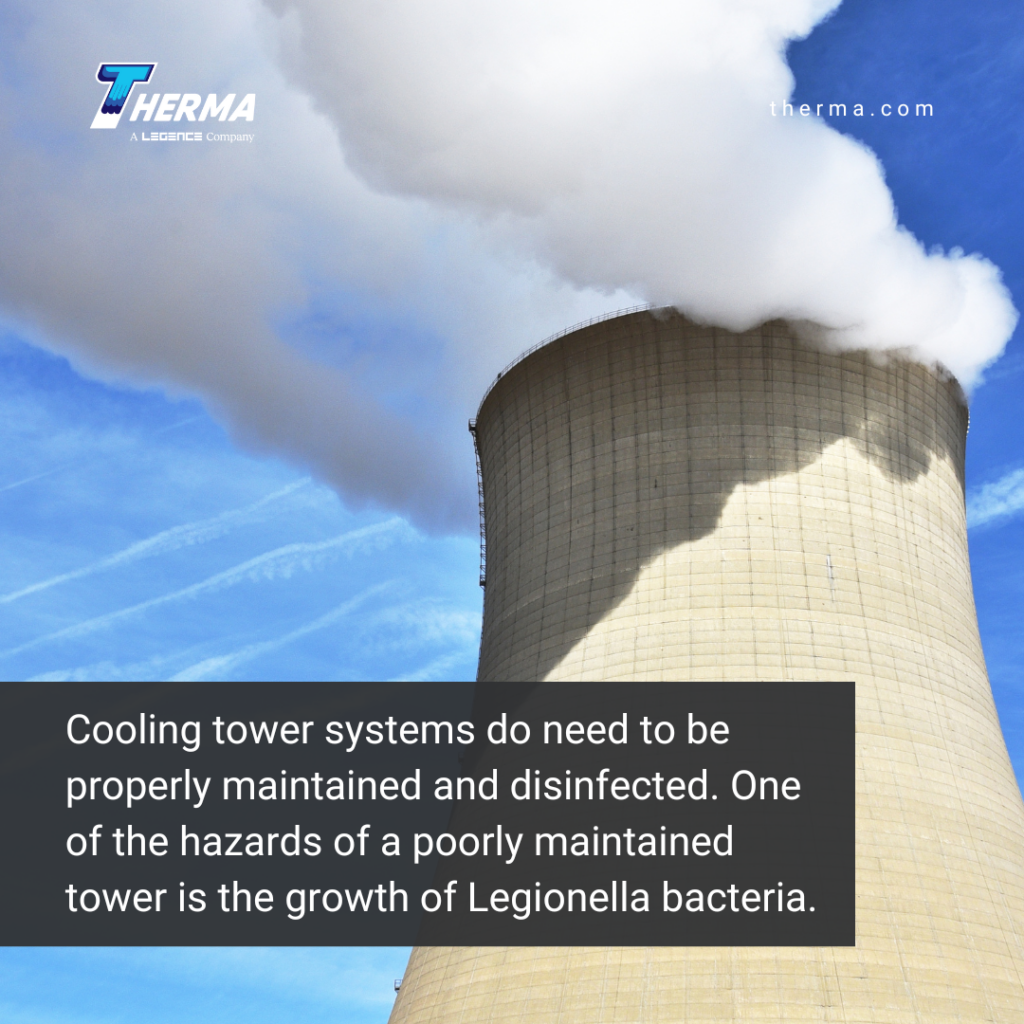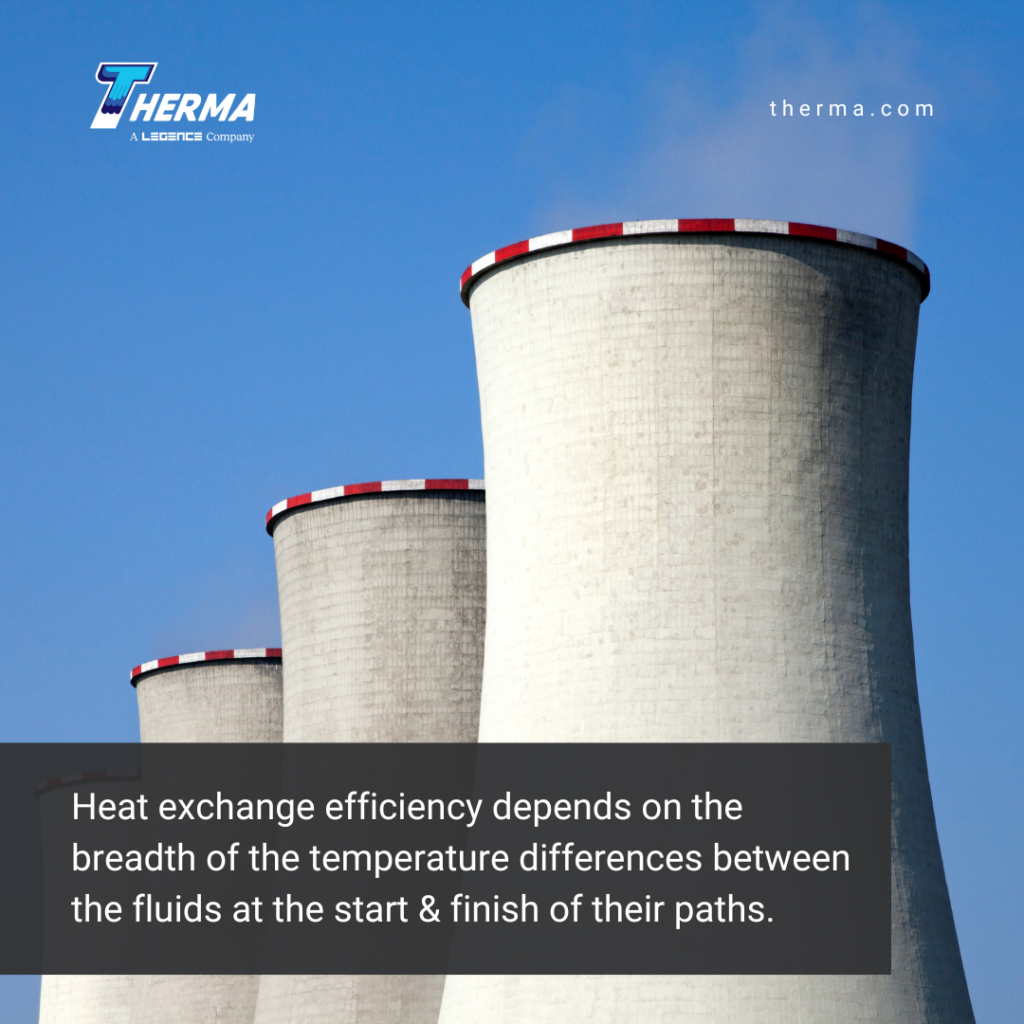by Patti Dees
Cooling tower systems provide critical heat exchange for some large buildings and industrial processes. But what is a cooling tower and how do they work?
What Cooling Towers Do
Large buildings, many industrial processes, and power generation all produce a great deal of heat. Cooling towers are a cost-efficient method for large-scale cooling and serve as part of HVAC and refrigeration systems. Their common heat exchange efficiency is 70-75%. While this may not be as high as a traditional HVAC or refrigeration unit, cooling towers handle large volumes of water and heat at a fraction of the cost.
Evaporation drives the heat exchange process in cooling towers. In evaporative cooling’s most basic form, air passes over warmer water, and the water loses heat to the air as it evaporates. The remainder of the water falls into a collector at a cooler temperature and is ready to be recirculated. About 2% of the water is lost as moisture in the air, so the regular addition of makeup water is needed.
It is very important to note that cooling tower systems do need to be properly maintained and disinfected. One of the hazards of a poorly maintained tower is the growth of Legionella bacteria. The bacteria causes Legionnaire’s disease, a serious lung infection, which is transmitted by breathing in contaminated water droplets.
Cooling Tower Design
The most commonly envisaged form of cooling towers is the hyperbolic tower seen outside of nuclear and other power generation facilities. However, towers take many forms and sizes to match the needs of the building or process. Cooling tower designs are classified by the method of airflow and fluid flow patterns.
Airflow:
How air flows past the warmer water impacts cooling rates, energy use, and efficiency. Air flow designs are divided into the natural draft and mechanical draft systems. Mechanical draft systems are further divided by the direction of airflow through the tower.
- Natural draft towers rely on environmental airflow patterns and convection to drive the air past the water. Because the airflow is not controlled, efficiency varies.
- Mechanical draft towers use fans to push or pull air through the tower. Forced air towers position fans below the water input to push the air up through the tower. Induced air towers use fans above the water input so that air is pulled up past the water. When comparing the two types of mechanical draft designs, induced air uses 30 – 75% less energy.
Flow pattern:
Heat exchanger flow patterns refer to the direction in which the fluids flow in relation to each other. Heat exchange efficiency depends on the breadth of the temperature differences between the fluids at the start and finish of their paths.
- Crossflow fluid patterns carry one fluid perpendicular to the second fluid.
- In counterflow patterns, both fluids flow against each other. Counterflow is more commonly used as it is the most efficient of the two patterns. However, a counterflow cooling tower is often taller than a crossflow tower, so it may not be feasible for areas with height restrictions.

Towers also include elements that improve cooling efficiency and reduce the amount of water lost during evaporation.
- Nozzles spray water as fine droplets, increasing the surface area exposed to the air and improving the rate of heat transfer.
- Specially designed packing materials may be added to further distribute the air and water droplets to maximize contact between the two fluids.
- Drift eliminators reduce water loss by minimizing the number of water droplets being carried away in the air currents.
For bulk refrigeration and HVAC needs, cooling tower systems provide an alternative to more costly traditional methods. Discuss your needs with professionals at Therma to determine how a cooling tower system can help cool your facility.
Patti draws on her background as a chemical engineer to share information with readers on technology, manufacturing, and construction.
Sources
CDC.gov – Cooling Towers | Other Uses of Water | Healthy Water | CDC
Engineering Toolbox – Cooling Tower Efficiency
Delta Cooling FAQ- What is a Cooling Tower and How Does it Work?








